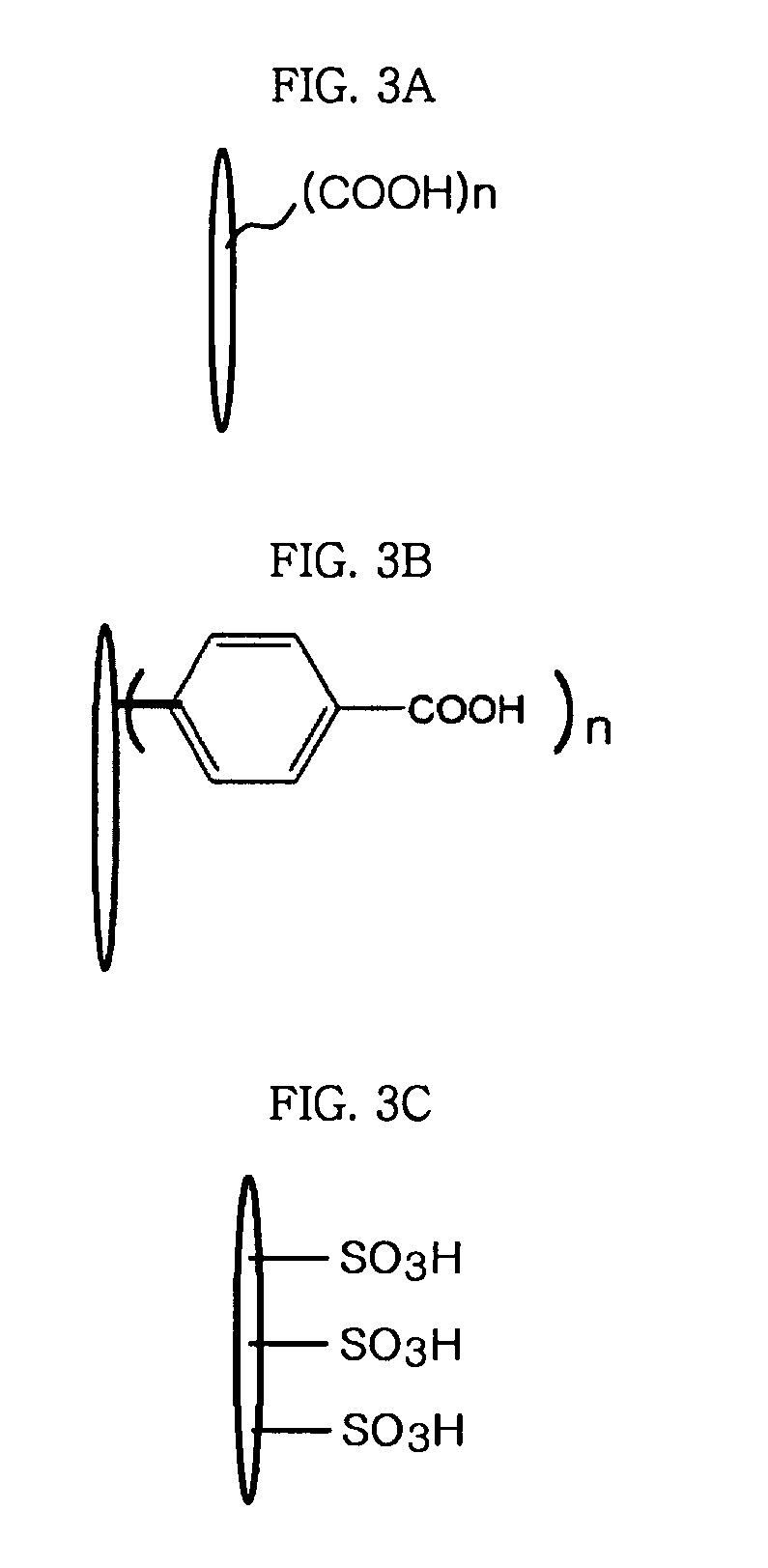Semiconductor electrode using carbon nanotube, preparation method thereof, and solar cell comprising the same
a carbon nanotube and electrode technology, applied in the field of semiconductor electrodes, can solve the problems of difficult improvement of solar energy into electrical energy conversion efficiency, increased production costs, and not all excited electrons injected into the conduction band reach the counter electrode, and achieve the effect of improving photoelectric conversion efficiency
- Summary
- Abstract
- Description
- Claims
- Application Information
AI Technical Summary
Benefits of technology
Problems solved by technology
Method used
Image
Examples
preparation example 1
Preparation of Carbon Nanotube Conjugated with Anchoring Functional Group
[0063]In an argon atmosphere, 20 milligrams (mg) of carbon nanotubes were added to a three-neck, round-bottom flask equipped with a dry ice condenser. Subsequently, 60 milliliters (mL) of ammonia were condensed within the flask and an 0.12 gram (g) strip of lithium was placed inside the flask. Afterwards, 6.4 millimoles (mmol) or 4 equivalents of 4-iodobenzoic acid were added, and the resulting mixture was stirred at −33° C. for 12 hours while the ammonia was slowly evaporated. Ethanol was slowly added, followed by quenching with water. Acidification with a 10% solution of hydrochloric acid, filtration through a 0.2 μm PTFE membrane, and washing with water and ethanol, in that order produced a 4-benzoic acid-conjugated carbon nanotube (CNT-(PhCOOH)n).
example 2
PREPRATION EXAMPLE 2
Preparation of Carbon Nanotube Conjugated with Anchoring Functional Group
[0064]1.0 g of carbon nanotubes was dispersed in 200 mL of a 1 N sulfuric acid solution. The dispersion was placed in a two-neck flask equipped with a reflux condenser and a dropping funnel and then heated at 150° C. in an oil bath with vigorous stirring. A solution of 29.04 g of potassium permanganate in 200 mL of 1N sulfuric acid was added dropwise from the dropping funnel. After 5 hours of additional refluxing, the reaction mixture was quenched and filtered. The filtrate was washed with distilled water, concentrated HCl, and distilled water in order, and dried to give carboxyl group-conjugated carbon nanotubes (CNT-(COOH)n).
example 1
[0065]A glass substrate was sputtered with fluorine-doped tin oxide (FTO), and then coated with a paste of TiO2 particles, having an average particle size of 13 nm, using a screen printing method. Drying at 70° C. for 30 minutes was followed by sintering at 500° C. for 60 minutes in an electric furnace to produce a porous TiO2 membrane having a thickness of about 15 μm, on the glass substrate.
[0066]4 mg of the CNT-(PhCOOH)n were dispersed in 15 ml of ethanol and subjected to ultrasonification (SONOREX RK 106, 35 kilohertz, 240 Watts, Bandelin Electronic, Germany) for 1 hour in a water bath maintained at 50° C to produce a carbon nanotube solution.
[0067]The glass substrate with the TiO2 layer formed thereon was immersed for 5 minutes in the carbon nanotube solution. After completion of the attachment of the carbon nanotubes, the glass substrate was immersed for 24 hours in a solution of cis-bis(isothiocyanato)-bis(2,2-bypyridyl-4,4′-dicarboxylato)-ruthenium (II) (“N3 dye”) in ethanol...
PUM
 Login to View More
Login to View More Abstract
Description
Claims
Application Information
 Login to View More
Login to View More - R&D
- Intellectual Property
- Life Sciences
- Materials
- Tech Scout
- Unparalleled Data Quality
- Higher Quality Content
- 60% Fewer Hallucinations
Browse by: Latest US Patents, China's latest patents, Technical Efficacy Thesaurus, Application Domain, Technology Topic, Popular Technical Reports.
© 2025 PatSnap. All rights reserved.Legal|Privacy policy|Modern Slavery Act Transparency Statement|Sitemap|About US| Contact US: help@patsnap.com



